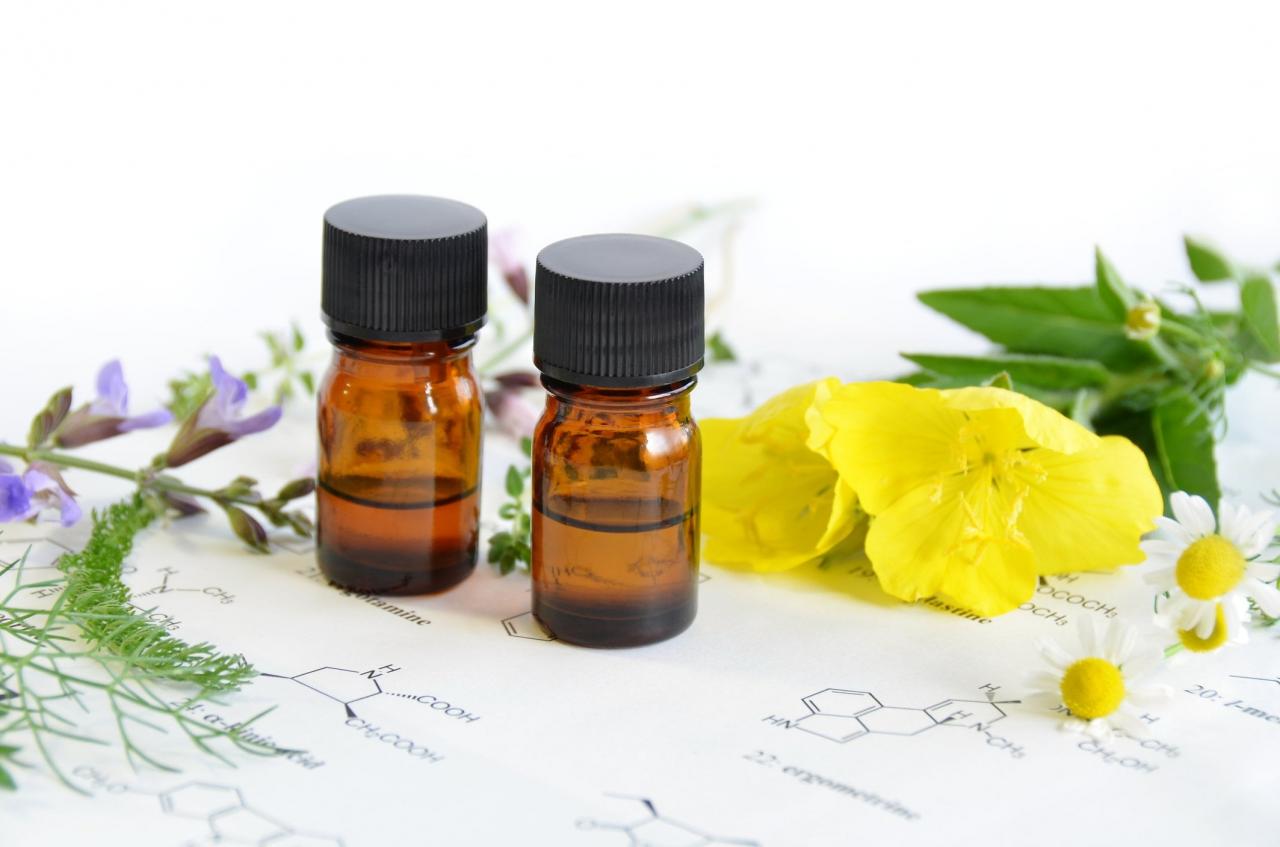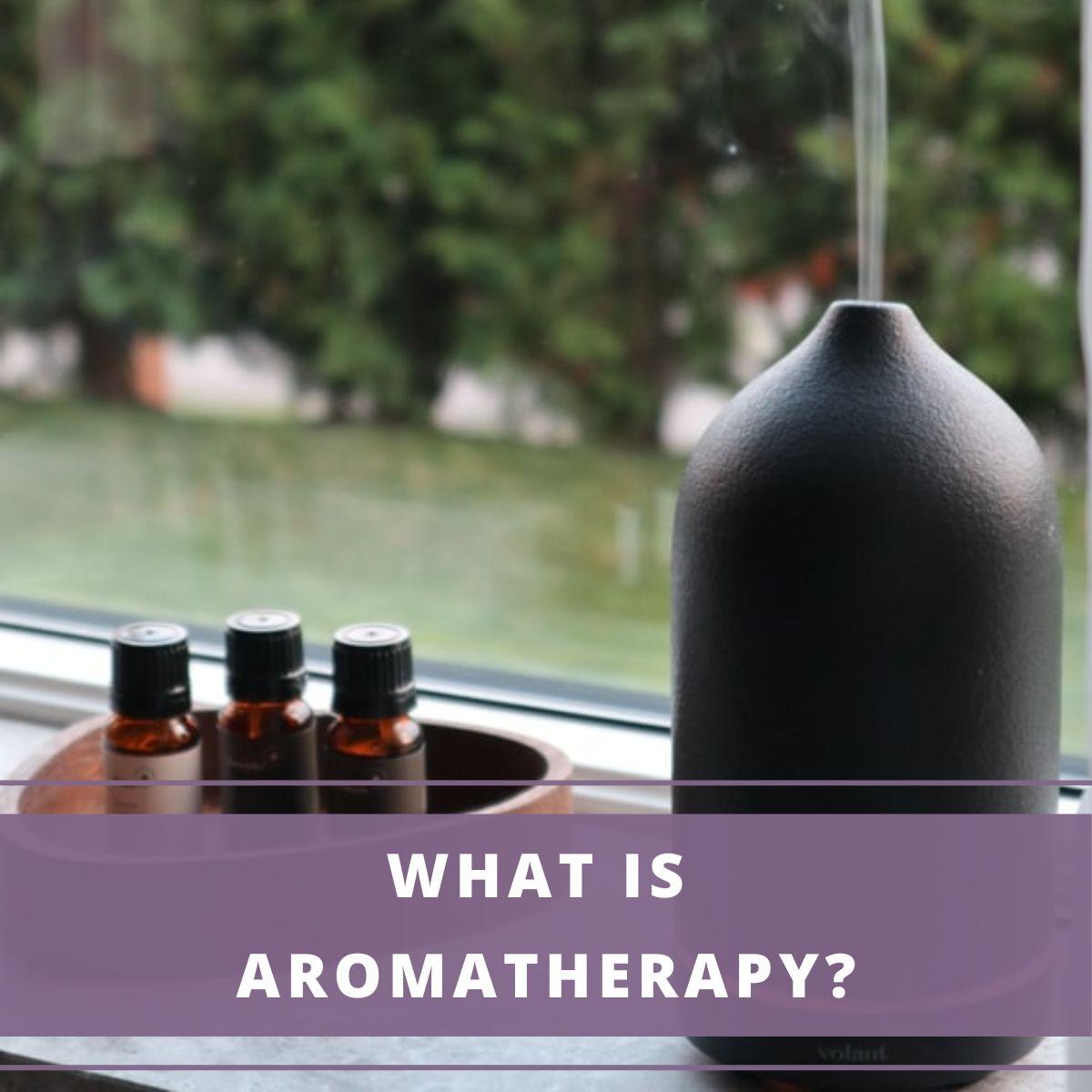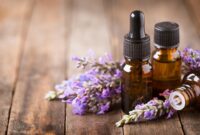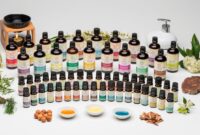As define aromatherapy takes center stage, this opening passage beckons readers into a world of holistic healing and aromatic wonders. Aromatherapy, the ancient practice of harnessing the therapeutic power of essential oils, has captivated civilizations for centuries. Delve into this captivating exploration to uncover the essence of aromatherapy, its myriad benefits, and the art of blending these fragrant treasures.
This comprehensive guide unravels the history, science, and applications of aromatherapy, empowering you with the knowledge to incorporate its transformative properties into your daily life. Discover the remarkable therapeutic qualities of essential oils, explore their diverse uses in various settings, and learn the essential safety guidelines for their safe and effective use.
Definition and Overview
Aromatherapy is a holistic practice that harnesses the therapeutic properties of essential oils, which are concentrated plant extracts, to promote well-being and address various health concerns.
Originating in ancient Egypt, Greece, and China, aromatherapy has a rich history of medicinal and spiritual use. Today, it is widely recognized as a complementary therapy that can enhance physical, emotional, and cognitive health.
Forms of Aromatherapy
Aromatherapy can be practiced in several forms:
- Inhalation:Inhaling essential oils through a diffuser, humidifier, or steam inhalation can directly impact the respiratory system and the brain.
- Topical Application:Essential oils can be diluted in carrier oils, such as jojoba or coconut oil, and applied to the skin for localized benefits.
- Diffusion:Using an essential oil diffuser disperses essential oils into the air, creating an aromatic environment that can affect mood, energy levels, and sleep patterns.
Essential Oils

Essential oils are concentrated plant oils that capture the essence of a plant’s fragrance and therapeutic properties. They are extracted through various methods, such as steam distillation, cold pressing, or solvent extraction.
In aromatherapy, essential oils are used for their therapeutic benefits. They are believed to have a range of effects, including relaxation, stress relief, pain reduction, and mood enhancement.
Extraction Methods
- Steam Distillation:This is the most common method of essential oil extraction. The plant material is placed in a still and heated with steam. The steam carries the essential oils away from the plant material, and they are then condensed and collected.
- Cold Pressing:This method is used for citrus fruits and other fruits with a high oil content. The fruit is pressed to extract the essential oil.
- Solvent Extraction:This method uses a solvent to extract the essential oils from the plant material. The solvent is then evaporated, leaving behind the essential oils.
Therapeutic Properties
Essential oils have a wide range of therapeutic properties, including:
- Anti-inflammatory:Essential oils such as lavender, chamomile, and peppermint have anti-inflammatory properties that can help reduce pain and swelling.
- Antimicrobial:Essential oils such as tea tree oil, eucalyptus oil, and oregano oil have antimicrobial properties that can help kill bacteria and viruses.
- Analgesic:Essential oils such as clove oil, wintergreen oil, and rosemary oil have analgesic properties that can help relieve pain.
- Sedative:Essential oils such as lavender oil, chamomile oil, and valerian oil have sedative properties that can help promote relaxation and sleep.
Commonly Used Essential Oils
There are many different essential oils that are used in aromatherapy, each with its own unique benefits. Some of the most commonly used essential oils include:
- Lavender oil:Lavender oil is known for its relaxing and calming properties. It can help reduce stress, anxiety, and insomnia.
- Peppermint oil:Peppermint oil is known for its invigorating and stimulating properties. It can help improve alertness, focus, and energy levels.
- Tea tree oil:Tea tree oil is known for its antimicrobial and anti-inflammatory properties. It can help treat acne, skin infections, and dandruff.
- Eucalyptus oil:Eucalyptus oil is known for its decongestant and expectorant properties. It can help relieve nasal congestion, coughs, and sore throats.
- Lemon oil:Lemon oil is known for its uplifting and energizing properties. It can help improve mood, reduce stress, and boost immunity.
Benefits of Aromatherapy

Aromatherapy has gained significant attention for its potential therapeutic benefits. Studies have demonstrated its positive effects on various aspects of well-being, including stress relief, improved sleep, and pain management.
Incorporating aromatherapy into daily routines is relatively simple. Essential oils can be diffused into the air using a diffuser or humidifier, added to bathwater, or applied topically to the skin (diluted in a carrier oil). The choice of essential oils and method of application depends on the desired outcome.
Stress Relief
Aromatherapy has been found to reduce stress and anxiety levels. Studies have shown that inhaling certain essential oils, such as lavender, chamomile, and bergamot, can activate the parasympathetic nervous system, promoting relaxation and reducing stress hormones.
Improved Sleep
Aromatherapy can aid in improving sleep quality. Essential oils like lavender, valerian root, and ylang-ylang have sedative effects that can promote relaxation and induce sleep. Diffusing these oils in the bedroom before bedtime or adding them to a warm bath can create a calming atmosphere conducive to restful sleep.
Pain Management
Aromatherapy has demonstrated promise in reducing pain. Essential oils such as peppermint, eucalyptus, and rosemary have analgesic and anti-inflammatory properties. Applying these oils topically to the affected area can provide relief from muscle pain, headaches, and joint pain.
Applications of Aromatherapy
Aromatherapy has a wide range of applications in various settings, offering therapeutic benefits for both physical and emotional well-being.
Spas and Salons
In spas and salons, aromatherapy is commonly used in massages, facials, and other treatments to enhance relaxation, promote skin health, and relieve stress.
- Massage:Essential oils are blended with carrier oils and applied during massages to soothe muscles, improve circulation, and reduce pain.
- Facials:Aromatherapy is incorporated into facials to cleanse, nourish, and rejuvenate the skin. Essential oils are added to steam, masks, or creams to address specific skin concerns.
- Other Treatments:Aromatherapy can also be used in foot soaks, body scrubs, and wraps to enhance the overall spa experience and promote relaxation.
Healthcare Facilities, Define aromatherapy
In hospitals and clinics, aromatherapy is increasingly used as a complementary therapy to alleviate pain, reduce stress, and improve patient outcomes.
- Pain Management:Essential oils like lavender, peppermint, and chamomile are used in aromatherapy to reduce pain and discomfort during labor, surgery, and chronic conditions.
- Stress Reduction:Aromatherapy can help reduce stress and anxiety in patients, promoting relaxation and improving overall well-being.
- Nausea and Vomiting:Certain essential oils, such as ginger and peppermint, have been found to alleviate nausea and vomiting, particularly in patients undergoing chemotherapy.
Safety and Precautions
Aromatherapy is generally considered safe when used properly. However, it is essential to take precautions to ensure its safe and effective use.
One of the most important safety measures is to dilute essential oils before applying them to the skin. Essential oils are highly concentrated and can cause irritation or allergic reactions if used undiluted. The recommended dilution ratio is typically 2-3% essential oil to 98-97% carrier oil, such as jojoba oil or almond oil.
Contraindications
Certain individuals may need to exercise caution when using aromatherapy, including:
- Pregnant women: Some essential oils, such as clary sage and rosemary, can stimulate uterine contractions and should be avoided during pregnancy.
- Individuals with epilepsy: Some essential oils, such as lavender and eucalyptus, can trigger seizures in individuals with epilepsy.
- Individuals with asthma or other respiratory conditions: Some essential oils, such as eucalyptus and peppermint, can irritate the respiratory tract and should be used with caution.
Potential Risks and Side Effects
While aromatherapy is generally safe, there are some potential risks and side effects associated with its use, including:
- Skin irritation: Undiluted essential oils can cause skin irritation, redness, and itching.
- Allergic reactions: Some individuals may experience allergic reactions to certain essential oils.
- Respiratory irritation: Inhaling essential oils in high concentrations can irritate the respiratory tract.
- Nausea and vomiting: Ingesting essential oils can cause nausea and vomiting.
To avoid these risks and side effects, it is important to use essential oils safely and responsibly. Always dilute essential oils before applying them to the skin, and avoid inhaling them in high concentrations. If you experience any adverse effects from aromatherapy, discontinue use and consult a healthcare professional.
Choosing Essential Oils
Selecting the right essential oils is crucial to experience the full benefits of aromatherapy. Consider the following factors when making your choice:
Quality and Purity
- Opt for essential oils that are 100% pure and undiluted, free from additives or carriers.
- Look for oils that have undergone rigorous testing and certification by reputable organizations.
- Avoid oils that are sold in clear glass bottles, as light can degrade their therapeutic properties.
Therapeutic Properties
Research the specific therapeutic properties of different essential oils and choose those that align with your intended use.
- For relaxation and stress relief, consider lavender, chamomile, or ylang-ylang.
- For energy and focus, opt for peppermint, rosemary, or eucalyptus.
- For pain relief, try peppermint, clove, or ginger.
Finding Reputable Suppliers
- Purchase essential oils from established and reputable suppliers who prioritize quality and authenticity.
- Read customer reviews and check for certifications to ensure the reliability of the supplier.
- Avoid purchasing oils from unknown or unverified sources, as they may be counterfeit or diluted.
Blending Essential Oils

Aromatherapy blending involves combining various essential oils to create customized mixtures tailored to specific purposes. Understanding the principles of compatibility, synergy, and dilution ratios is crucial for effective blending.
Essential oils can be blended to enhance their therapeutic effects, create unique scents, or address specific health concerns. By combining different oils, you can create synergies that magnify their individual properties, resulting in a more potent blend.
Compatibility
Compatibility refers to the ability of essential oils to blend harmoniously without causing adverse reactions. Certain oils may interact negatively, so it’s important to research compatibility before blending. Compatibility charts or reference books can guide you in selecting suitable combinations.
Synergy
Synergy occurs when the combined effect of essential oils is greater than the sum of their individual effects. Blending oils that complement each other can enhance their therapeutic properties. For instance, lavender and chamomile promote relaxation, while rosemary and peppermint stimulate alertness.
Dilution Ratios
Dilution ratios determine the concentration of essential oils in a blend. Typically, essential oils are diluted in a carrier oil, such as jojoba or coconut oil, to ensure safe topical application. The appropriate dilution ratio depends on the intended use and the potency of the essential oils.
A higher concentration may be suitable for diffusers, while a lower concentration is preferred for direct skin application.
Popular Essential Oil Blends
- Relaxation Blend:Lavender, chamomile, and bergamot
- Uplifting Blend:Orange, grapefruit, and rosemary
- Stress Relief Blend:Lavender, ylang-ylang, and clary sage
- Sleep Aid Blend:Lavender, valerian root, and chamomile
- Headache Relief Blend:Peppermint, lavender, and eucalyptus
Ending Remarks
Aromatherapy, with its enchanting scents and therapeutic embrace, offers a holistic approach to well-being. Embrace the power of nature’s aromatic gifts to alleviate stress, promote relaxation, and enhance your overall health. Let the fragrant journey of aromatherapy guide you towards a life filled with harmony, balance, and renewed vitality.
FAQs: Define Aromatherapy
What is the primary purpose of aromatherapy?
Aromatherapy aims to promote physical, emotional, and mental well-being through the inhalation or topical application of essential oils.
How are essential oils extracted?
Essential oils are extracted from plants through various methods, including steam distillation, cold pressing, and solvent extraction.
Is aromatherapy safe for everyone?
While generally safe, certain essential oils may have contraindications for pregnant women, individuals with certain medical conditions, or those taking specific medications. It’s always advisable to consult a healthcare professional before using aromatherapy.


